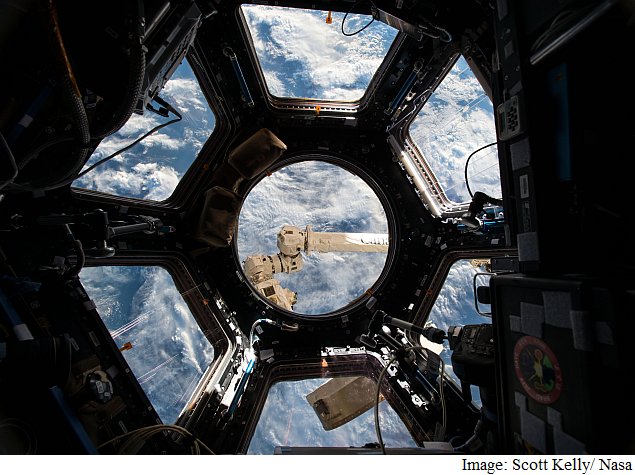- Home
- Science
- Science News
- Microscopic Worms May Soon Hitch a Ride to ISS
Microscopic Worms May Soon Hitch a Ride to ISS

Scientists are planning to send thousands of microscopic worms to the International Space Station (ISS) in an experiment aimed at understanding what triggers the body to build and lose muscle.
In a recent international call for new life sciences experiments to be flown on the ISS, coordinated by Nasa, the European Space Agency (ESA), and the Japanese and Canadian space agencies, three new experiments led by UK research teams were selected for further consideration.
One of the experiments is led by Dr. Timothy Etheridge of Sport and Health Sciences at the University of Exeter, who studies muscle decline in space and potential ways of counteracting this.
Etheridge's team will use a nematode worm species called Caenorhabditis elegans - or 'C elegans' - which are highly useful for studying long term changes in human physiology because they suffer from muscle loss under many of the same conditions that people do.
The worms, which are too small to be seen by the naked eye, will be placed in small bags of liquid food and flown to the ISS to live and produce offspring for five and a half days, before being frozen by the astronauts and returned to Etheridge's lab for analysis of muscle health.
Muscle weakness and reduced muscle mass are significant problems with spaceflight, but the research findings also have wider potential application in ways to help people with muscular dystrophy and diabetes, people immobilised by casts and the elderly.
The experiment, likely to take place between 2017-2020, might therefore improve our understanding of human health here on Earth, as well as the effects of long duration human space travel.
"As the world's space agencies plan longer, more ambitious missions, this poses a major challenge. Astronauts lose as much as 40 percent of muscle mass after 180 days onboard the International Space Station," Etheridge said.
"Perhaps more worryingly, because muscle carries out several metabolic processes such as burning glucose and fat for energy, this level of muscle wasting could help lead to metabolic ailments such as type 2 diabetes, cardiovascular disease and obesity..."
"These experiments will provide the first definitive demonstration of the mechanisms underlying muscle loss in space, and help to develop targeted therapies to lessen the problem in the future," he said.For the latest tech news and reviews, follow Gadgets 360 on X, Facebook, WhatsApp, Threads and Google News. For the latest videos on gadgets and tech, subscribe to our YouTube channel. If you want to know everything about top influencers, follow our in-house Who'sThat360 on Instagram and YouTube.
Related Stories
- AI
- iPhone 16 Leaks
- Apple Vision Pro
- Oneplus 12
- iPhone 14
- Apple iPhone 15
- OnePlus Nord CE 3 Lite 5G
- iPhone 13
- Xiaomi 14 Pro
- Oppo Find N3
- Tecno Spark Go (2023)
- Realme V30
- Best Phones Under 25000
- Samsung Galaxy S24 Series
- Cryptocurrency
- iQoo 12
- Samsung Galaxy S24 Ultra
- Giottus
- Samsung Galaxy Z Flip 5
- Apple 'Scary Fast'
- Housefull 5
- GoPro Hero 12 Black Review
- Invincible Season 2
- JioGlass
- HD Ready TV
- Laptop Under 50000
- Smartwatch Under 10000
- Latest Mobile Phones
- Compare Phones
- HMD Pulse
- HMD Pulse+
- HMD Pulse Pro
- Realme Narzo 70x 5G
- Realme Narzo 70 5G
- Samsung Galaxy C55
- Blackview Hero 10
- Oppo K12
- Lenovo IdeaPad Pro 5i
- Asus ZenBook Duo 2024 (UX8406)
- Realme Pad 2 Wi-Fi
- Redmi Pad Pro
- boAt Storm Call 3
- Lava ProWatch Zn
- Samsung Samsung Neo QLED 8K Smart TV QN800D
- Samsung Neo QLED 4K Smart TV (QN90D)
- Sony PlayStation 5 Slim Digital Edition
- Sony PlayStation 5 Slim
- Lloyd 1.5 Ton 3 Star Inverter Split AC (GLS18I3FOSEW)
- Haier 1.5 Ton 3 Star Triple Inverter Split AC (HSU18K-PYSS3BN-INV)
















